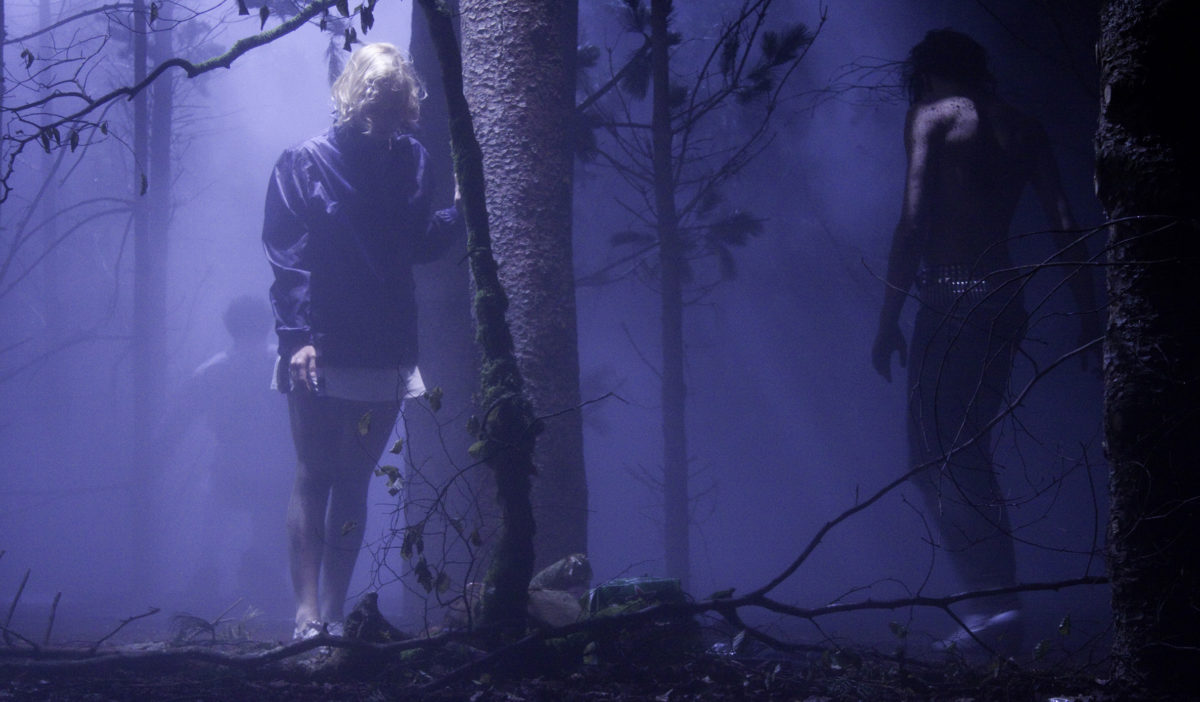
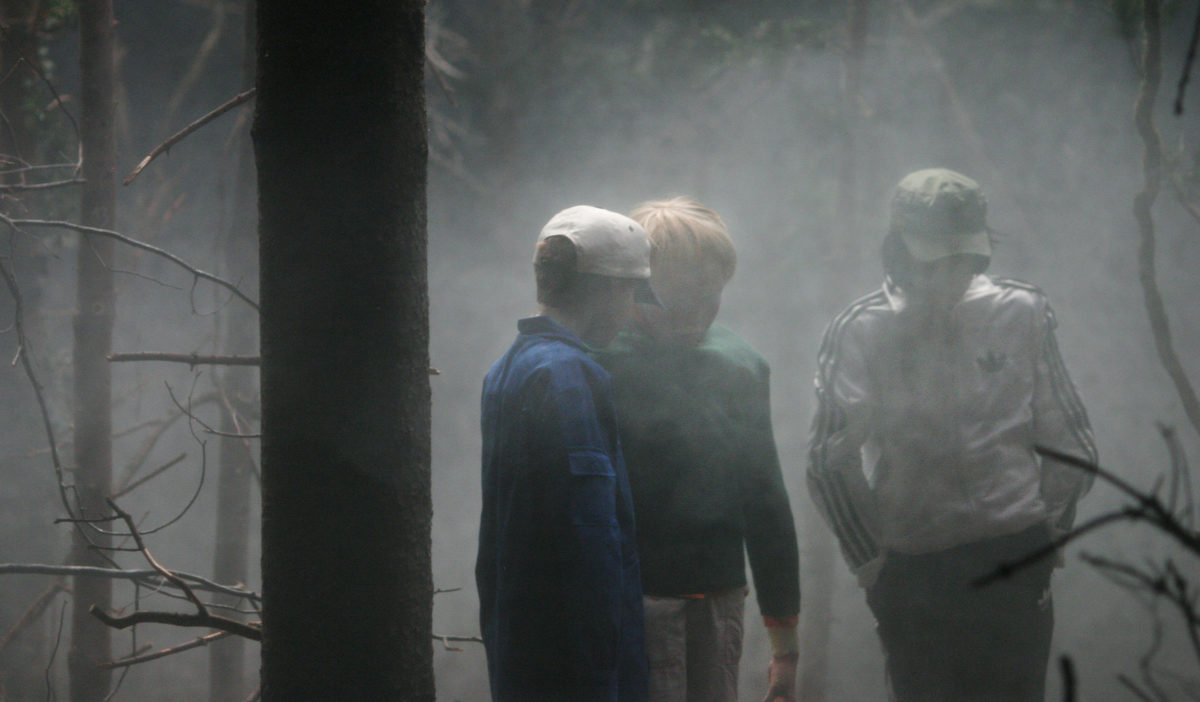
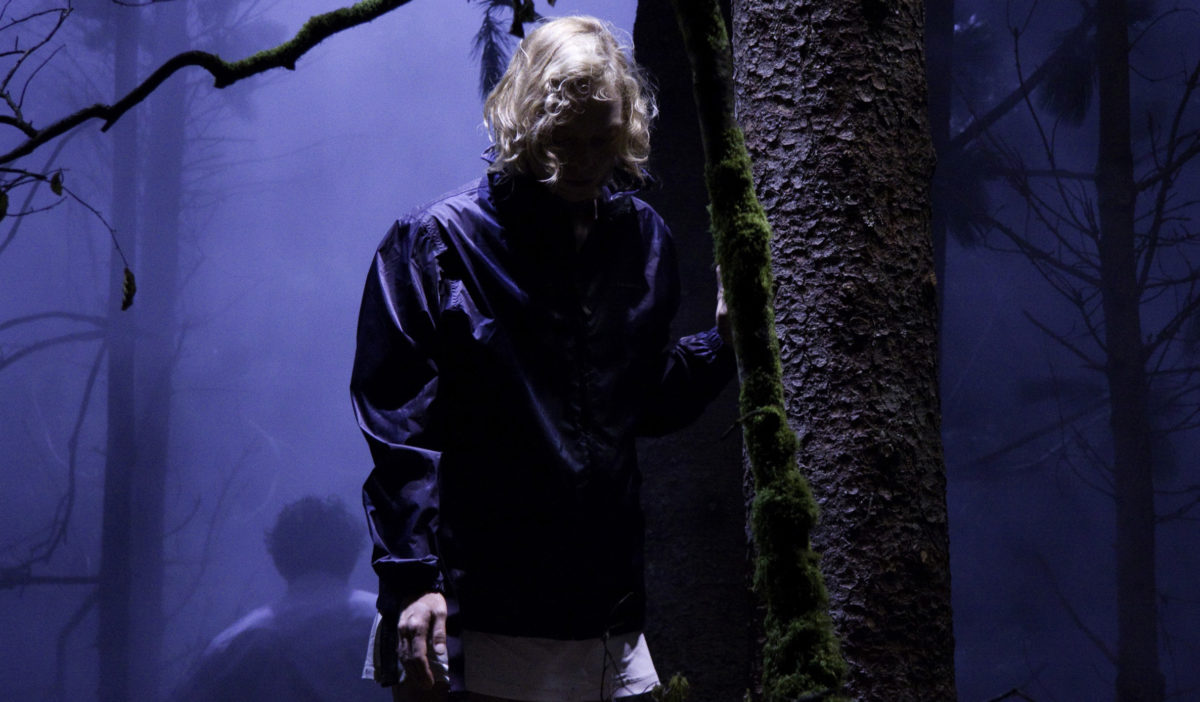
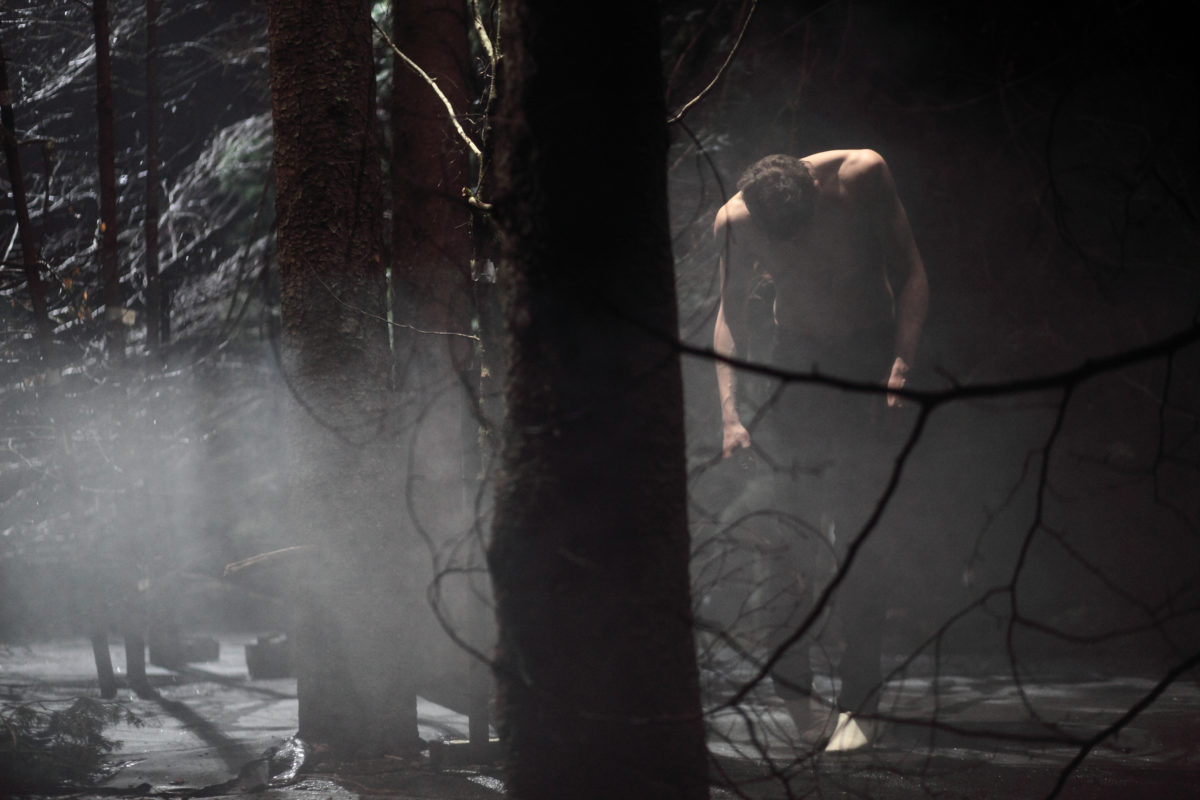
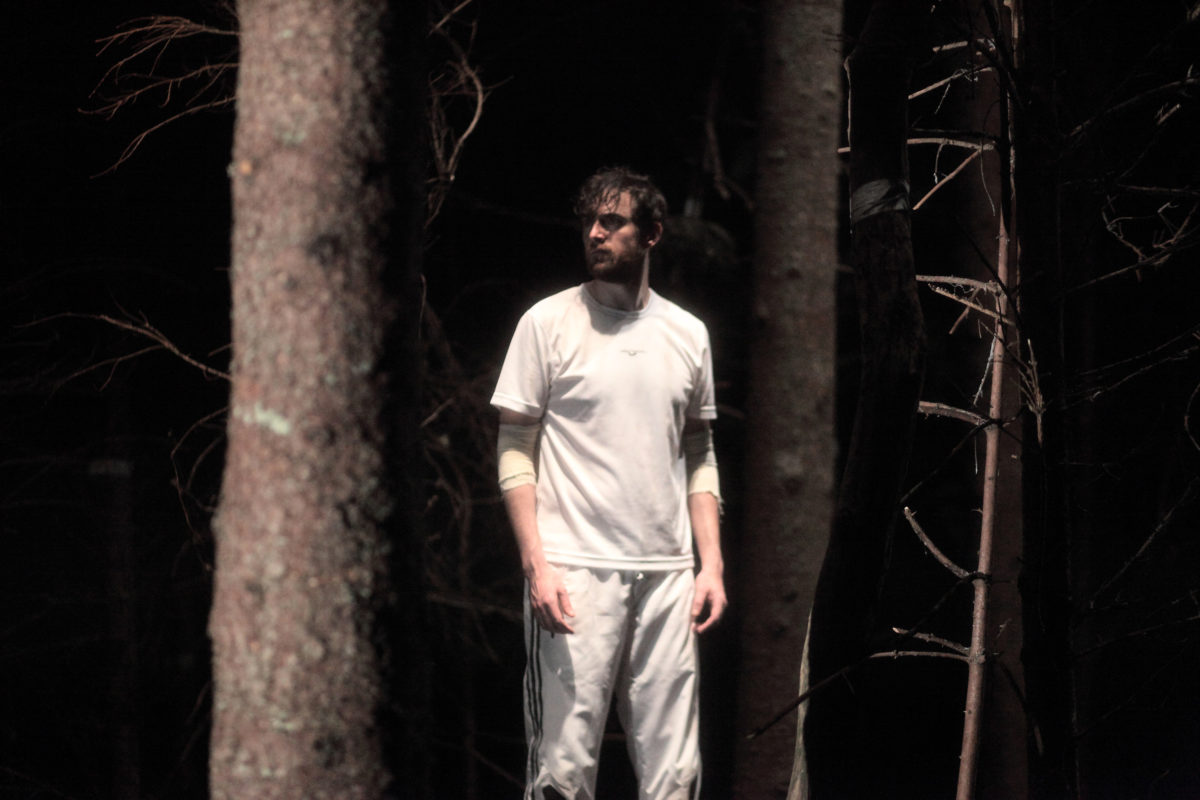
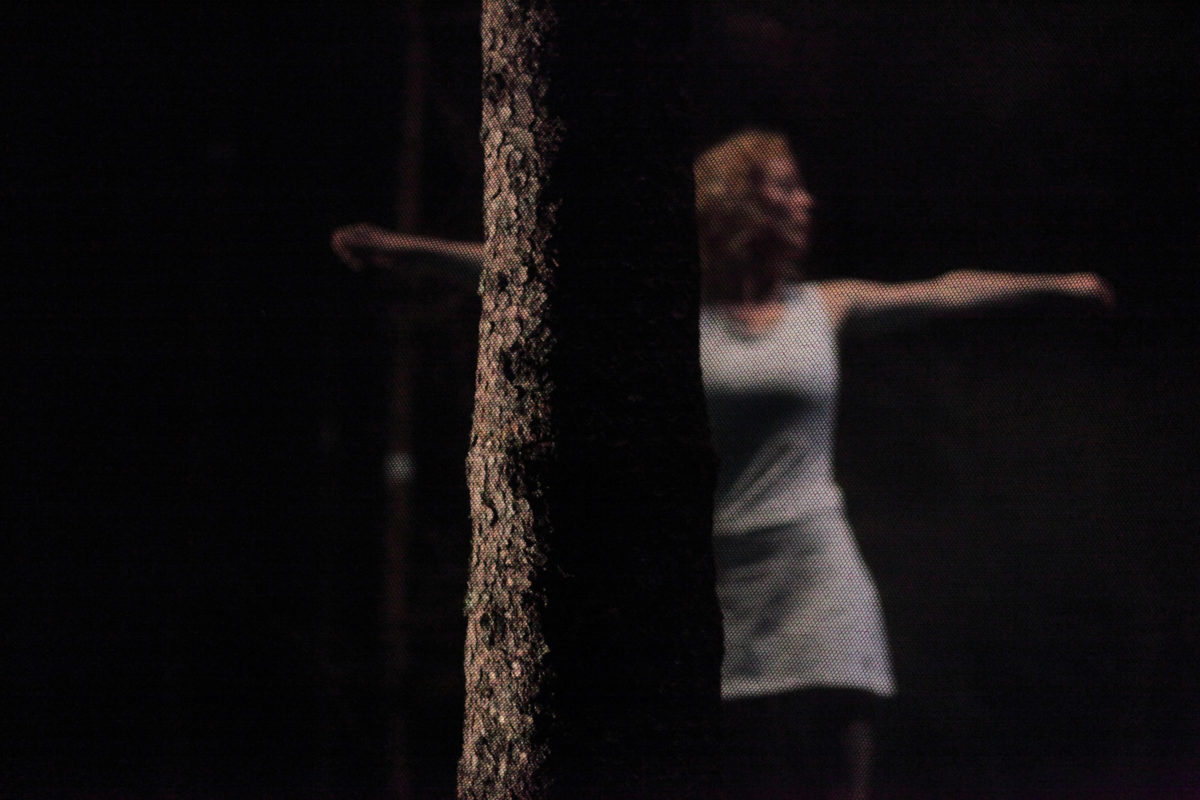
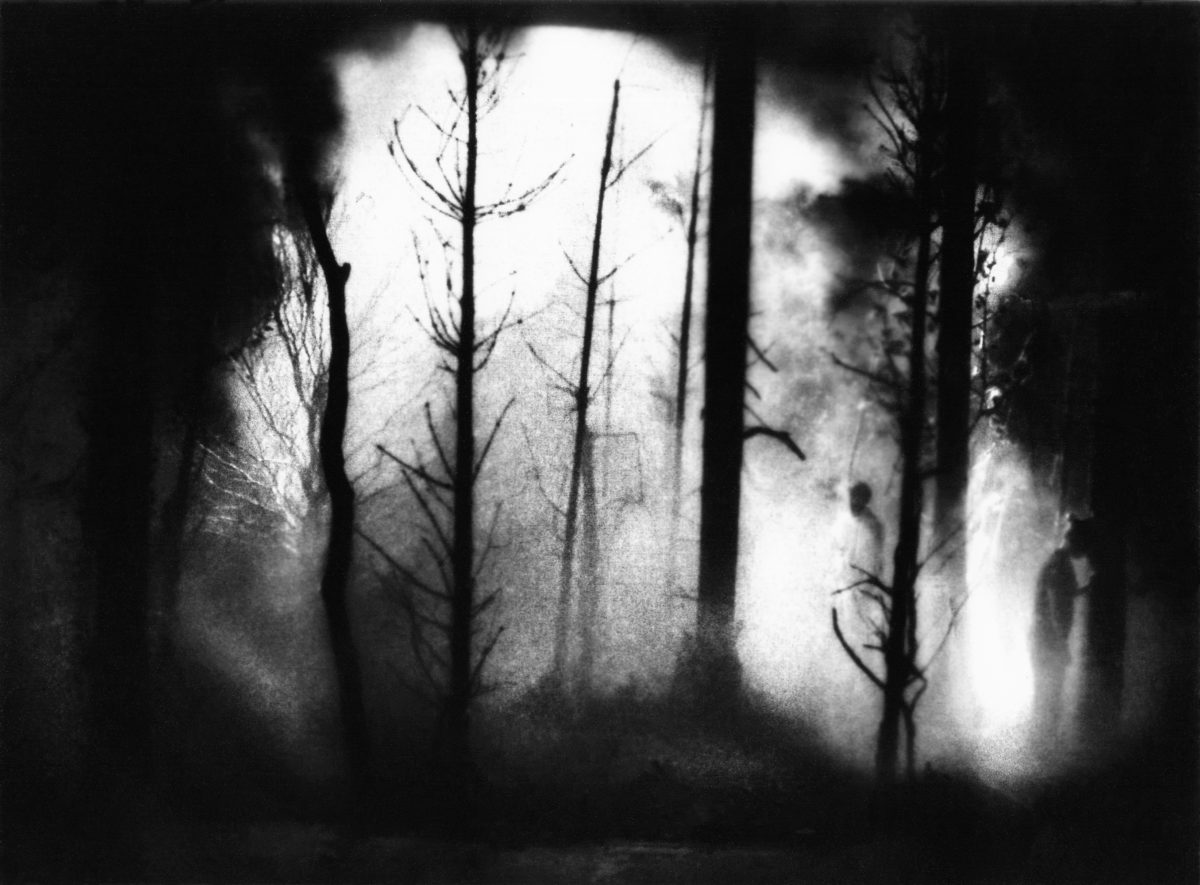
This Is How You Will Disappear
Cast
Conception, directing, choreography and scenography Gisèle Vienne
Music creation Stephen O’Malley & Peter Rehberg
Remix and performed live by Stephen O’Malley
Acknowledgements to INAGRM & CINEMA BELLEVAUX
Text and song lyrics Dennis Cooper
Light Patrick Riou
Fog sculpture Fujiko Nakaya
Video Shiro Takatani
Created in collaboration with, and performed by Jonathan Capdevielle, Nuria Guiu Sagarra & Jonathan Schatz
Costumes design José Enrique Oña Selfa
Hawker Les Ailes de l’Urga Patrice Potier, Simon Potier & Martial Vernier
Special thanks to Anja Röttgerkamp & Vilborg Asa Gudjónsdóttir
Dolls making Raphaël Rubbens, Dorothéa Vienne-Pollak & Gisèle Vienne
Trees making (reconstruction) and consulting La Licorne Verte Hervé Mayon
Trees making (sculpting and reconstruction) Ô Bois Fleuri, ateliers de Grenoble François Cuny
Make-up, wigs and hairdressing Rebecca Flores
Live electronics design Carl Faia
Visual programmator Ken Furudate
Fog engineer Urs Hildebrand
With the technical support of Quartz Scène Nationale Brest
Technical director Nicolas Barrot
Stage managers Philippe Deliens & Antoine Hordé
Light managers Arnaud Lavisse & Samuel Dosière
Sound manager Adrien Michel
Costumes making Marino Marchand
Ground making Michel Arnould & Christophe Tocanier
Translation from English-American to French Laurence Viallet
Production & diffusion Alma Office – Anne-Lise Gobin, Alix Sarrade, Camille Queval & Andrea Kerr
Administration DACM – Cloé Haas & Clémentine Papandrea
Special advisor Emmanuelle de Montgazon
Acknowledgements to Jean-Luc Verna, André Leclerc and the club des Archers d’Iroise, Carl Faia, Monique Vialadieu & Gérard Hourbette, Dorothéa Vienne-Pollack, Jean-Paul Vienne, the Keroual woodcutters, Ivana Jozic, Alexandre Vienne, Stanick Jeannette, Aurore Ponomarenko, Pauline Blouch, Eliane Roudaut, Isabelle Piechaczyk, Nicolas Minssen, Christophe Lebris, Gérard D’Élia, Margrét Sara Gudjónsdóttir, Etienne Hunsinger & Giovanna Rua
Partners
Executive producer DACM with the collaboration of Quartz Scène nationale Brest (Gisèle Vienne is associate artist from 2007 to 2011)
Coproducers Le Quartz Scène nationale Brest // Festival d’Avignon // Festival/Tokyo // Steep Slope Studio-Yokohama // steirischer herbst-Graz // Comédie de Caen Centre Dramatique National de Normandie // Centre Dramatique National Orléans/Loiret/Centre // Kyoto Experiment Festival avec le soutien de Saison Foundation & EU Japan Fest // BIT Teatergarasjen-Bergen // Göteborg Dans & Teater Festival l Kampnagel-Hambourg // The National Theater – Oslo // Centre Chorégraphique National de Franche-Comté à Belfort dans le cadre de l’accueil studio // Centre Chorégraphique National de Grenoble dans le cadre de l’accueil studio // résidence-association ArtZoyd // Le Phénix Scène nationale Valenciennes
With the support of Japan Foundation through the Performing Arts JAPAN program // Étant donnés, the French-American Fund for the Performing Arts, a program of FACE // DICRéAM − Ministère de la Culture et de la Communication // Institut français et la Ville de Grenoble, dans le cadre de la convention Institut français − Ville de Grenoble // Conseil Général de l’Isère // Service Culturel de l’Ambassade de France à Tokyo
Acknowledgements to Institut Franco-Japonais de Tokyo & Villa Kujoyama, Institut Franco-Japonais du Kansai-Kyoto
Project coproduced by NXTSTP with the support of the Culture Programme of the European Union
Residency for the rehearsals Quartz Scène nationale de Brest, Centre National de la Danse in Pantin, Centre Chorégraphique National de Franche-Comté in Belfort in the frame of the accueil studio and in Centquatre in Paris
Presentation
My previous shows have explored seemingly opposite aesthetic realms. I therefore felt it was important to juxtapose these oppositions within a single work.
Our springboard is the notion of beauty that stems both from order and from disorder. We shall examine these different types of aesthetic experiences, which are seemingly contrary and yet inseparable, through the prism of Apollonian beauty versus Dionysian beauty. This leads to an inquiry into the Nietzschean view of tragedy — how it is born from the reconciliation of conflicting gods.
The action takes place in a very naturalistic forest. The landscape, at first realistic and then increasingly symbolic, is inhabited by three characters in search of a spiritual experience. The landscape plays an active role, mirroring the three characters’ inner experience.
Beauty linked with order and with the force of benevolent nature is transformed into chaos. This shift is propelled by the landscape, which echoes the development of one of the characters in particular, raising questions about the disturbing dichotomy between civilization and savagery. Our desires and repulsions, triggered by these divergent aesthetic experiences, animate our sensations and thoughts, and elicit moral issues that are eternally relevant.
The path of beauty: from order and perfection to disorder and ruin
We are often drawn to opposite aesthetic poles, reflecting the ambivalence of our existence. The dichotomy between Dionysian beauty and Apollonian beauty is the pivot for our inquiry into the following issues: our driving force, as humans our primitive instincts, the euphoria arising from our basic nature, our carnal rapport with the world, our quest for meaning, and our ability to channel and shape the forces of nature.
When this aesthetic dichotomy spills over its borders, triggering radical modes of behavior within the community, a disturbing element emerges. This occurs, for instance, when the beauty of order is used for political propaganda, or when the beauty of ruin inspires vandalism or justifies violent acts. Thus, a potentially disturbing aspect is always embedded in the aesthetics of order versus disorder, ultimately reflecting our driving force. Through art, we can embark upon a sincere dialogue with our deepest urges, and experience them without toppling the community’s equilibrium.
The show’s core elements are treated as archetypes, in the vein of a contemporary myth. The characters thereby symbolize forces of nature and aspects of the human condition. The scenography (we use this term to include sets, objects, lights and machine-generated phenomena) depicts a landscape with immense potential for transformation: a forest, which is initially pleasant and safe, and then becomes frightening and dangerous. This scenographic shift parallels the entire show, which begins in a state of order linked to civilization, and then veers into savagery, thus inciting us to examine the dichotomy.
Since the time of medieval literature, the forest has been a narrative archetype for spawning contrary themes such as love, adventure, quest, enchantment, vision, and their shadier counterparts of death, madness, penitence … transforming an idyllic environment into a nightmare.
The show’s three characters are also archetypal: a trainer stands for authority and orderliness, a young female athlete for beauty linked to perfection, and a young rock star for beauty linked to ruin. These post-adolescent idols embody oppositional ideals — contradictory canons of beauty arising from contemporary culture. These two idols strongly oscillate between an embodied and a disembodied interpretation. While perceptual space turns from real into mental, these characters, appearing to be figures, instead emerge to be fantasies. Ghosts stemming from the spirit of the trainer.
The forest initially appears as a site for health and sport, encouraging a civilized and educated body-rapport. The trainer and young athlete reveal how they relate to body and world by way of a choreographic score that is nearly silent. Dance is linked to health, and the aim is an ideal relationship between body and psyche; the body conveys the beauty and loftiness that occur when man is in harmony with nature.
While at first the trainer seems to be the one exercising authority over the athlete, it soon becomes clear that the athlete has an even more tyrannical relationship with herself. Both characters are motivated by self-control and willpower. They both strive for perfection, and yet they do not hide their deep inner conflicts, which we glimpse alongside their goals. We are made aware of the painful relationship they have with their own imperfection. Their diverse torments create a rift, which causes them, following very different paths, to reassess their values.
Due to a series of seemingly exterior phenomena, the internal growth of both characters, and the arrival of a third character, the forest is soon revealed as a place of savagery, far from civilization and morality. At a turning point in the plot, the forest and climate become highly ambivalent, and unfold independently of the protagonists. Their status will change radically and will overturn the show, through a score full of provoked natural phenomena. The poems are interwoven with Dennis Cooper’s prose, which bursts in and foreshadows the pending aesthetic upheaval. They blur our understanding. Though we understand that separate internal voices all come from the same person, the trainer. The advent of Cooperian beauty, beauty linked to disorder, is at first expressed in a vision and prophetic poetry, and then enacted in a more narrative register. The incoherence that appears reveals a fundamental mental aspect: a hodgepodge of confused thoughts and a rejection from clarified bursts of consciousness.
These disturbances at first appear surreal. They are rationally justified and personified via a young male rock star in search of exile, a descendant of Werther and cousin of Kurt Cobain. He embodies beauty linked inseparably to ruin. The encounter between the trainer and this suicidal character unleashes primitive urges and chaos. The forest turns into a den of iniquity, where the characters bare themselves and are tormented by their unbridled passions. After the rock star’s entrance, the show undergoes a development that is partially verbal, and ends up with the trainer brutally murdering the rock star.
Through the music, movement and entire aesthetic fabric, both the audience watching the startling murder scene and the young athlete performer, a hidden witness, intuit that pleasure can be derived from ruin and annihilation. It seems as if the athlete is voicing this realization from the depths of an abyss.
The problematic of aesthetic pleasure caused by ugliness and disharmony dissolves into the sheer pleasure of listening to dissonance, being ultimately an aesthetic mechanism triggered by our own will. The interplay of tensions between harmony and disharmony can be a source of intense jubilation.
The creative virtues of contradiction
Jubilatory violence arises from a blend of strong pain and immense will, and this is what animates the three characters. The forest is, among its various guises, a site for spiritual quest. This quest eventually is the critical aspiration which animates the three characters, whom seem to become one and only one, the trainer and the two ghosts projected from his imagination. While the characters all pursue a spiritual quest, they are unable to articulate what they’re searching for until they experience the dichotomy between order and chaos, reason and urges, control and abandon. At that moment, they grasp the contradictory forces that fuel them and create their inner antagonism.
The characters each undergo a physical experience that entails the revelation of a deeper spiritual truth. Their trials are linked to their goals and inner dilemmas, and these conflicts appear onstage as aesthetic contrasts. This aesthetic tension is also developed in the scenography. The forest, the climate, and the ever-changing landscape, are made to mirror the characters’ moods and psychology, in line with the Romantic tradition.
As mentioned above, the forest’s ambivalence heightens the shift from naturalist space to unreal space. The dramatic potential of the natural phenomena, whereby forest and climate are depicted by scenographic devices, at times is in dialogue with the characters, and at times unfolds independently.
The visual art work aims to create and unleash natural phenomena that are experienced physiologically and psychologically by the characters as well as by the audience. We are interested in the gap between a rational expectation caused by an event, and the resulting physical experience. We wish to explore the impact of climatic phenomena on our emotions and sensibility. Our collaboration with Shiro Takatani, lighting artist Patrick Riou, fog artist Fujiko Nakaya, and the entire technical team, will enable us to fully exploit the depiction of nature onstage. We’re interested in portraying the type of landscape that figures in Romantic painting while, at the same time, giving it a formal twist by juxtaposing this landscape with objects and movement. We wish to probe our physical response to this sort of phenomena, which we shall be creating and reenacting onstage. The active role of the music also harkens back to the aesthetic aims of Romanticism.
The music reflects the various inner harmonies and conflicts. The compositions of Stephen O’Malley and Peter Rehberg range from displays of Dionysian beauty to spiritual music. This disparity underlies the show’s dramaturgy, whereby speech sometimes becomes impossible and gives way to the intensity of music, which serves as a Dionysian mirror of the world. The music evokes a demon arising from the depths and plays a purging role while paralleling the theatrical presentation in such a way that makes us face that which lurks within. Thus, the music adds a metaphysical thrust that allows us to go beyond speech and image. We wish to probe and fully exploit this force and metaphysical aspect.
The dialogue between the show’s various elements resonates and rebounds among the characters, the music, the environment and the text, thus taking us on a journey from chaos to order, from dissonance to harmony, and from upheaval to equilibrium.
Finally, the show pays homage to the artistic experience and its vital impact on our spiritual growth. The mystical experience is evoked through the character of the young athlete and the trainer, nearly doppelgänger, in order to highlight the link between mystical and artistic. When we have the young athlete discerning the rock star’s corpse, prompting a profound crisis, our aim is to depict a shattering poetic experience.
Both the mystical and artistic experiences can generate deep unease by creating a sense of indistinctiveness between body and world; they respond to the primitive fantasy of unity and arise when we abandon clear-cut perception. These shared characteristics have been explored by George Bataille in L’Érotisme.
Finally, the enacted murder and depiction of death take on metaphysical significance, they depict the absence of distinction between body and world par excellence, and thus serve as a metaphor for the artistic experience.
Original soundtrack
From The Skies (O’Malley/Rehberg)
Guitar, bass: Stephen O’Malley
Batterie: Masami Akita
Electronics: Peter Rehberg
Recorded 0909 GOK Tokyo by Jim O’Rourke, 0210 Aleph, Seattle by Randall Dunn
Edited 0610 Brest
Bowing 2.1 (O’Malley)
EMS Synthi, Hammond: Stephen O’Malley
Piano: Jim O’Rourke
Violin: Eyvind Kang & Timba Harris
Recorded 0909 GOK Tokyo by Jim O’Rourke, 0210 Aleph, Seattle by Randall Dunn
String arrangements: Timba Harris
Edited 0610 Brest
Fieldwork1 (Rehberg)
Electronics: Peter Rehberg
Recorded 0110-0310 Klosterneuburg, Stein, Wien
Edited 0610 Brest
Dynasty (O’Malley)
Guitars, Piano: Stephen O’Malley
Piano: Jim O’Rourke
Tuba, Trombone: Greg Powers
Trombone: Stuart Dempster
Violin, Trumpet: Timba Harris
French Horn: Josiah Boothsby
Violin: Eyvind Kang
Recorded 0909 GOK Tokyo by Jim O’Rourke, 0210 Aleph, Seattle by Randall Dunn
Brass & string arrangements: Timba Harris
Edited 0610 Brest
Olympia (O’Malley/Rehberg)
Electronics: Stephen O’Malley & Peter Rehberg
Recorded 0210 HOH Rainforest & 0310 Stein
Edited 0610 Brest
Sirens (O’Malley)
Percussion, Electronics: Stephen O’Malley
Recorded 0809 Golden Hum, London
Edited 0610 Brest
Mepry (Rehberg)
Electronics: Peter Rehberg
Recorded 0605 Twisted Studio, Wien
Edited 0610 Brest
Expected To Survive (Rehberg)
Electronics: Peter Rehberg
Recorded 1209 Twisted Studio, Wien
Edited 0610 Brest
Concrete Breathing (Rehberg)
Electronics: Peter Rehberg
Recorded 0510 Twisted Studio, Wien
Edited 0610 Brest
Sexy Angel (O’Malley / Cooper)
Vocals: Noriko Tujiko
Lyrics: Dennis Cooper
Guitar: Stephen O’Malley
Guitar: Michio Kurahara
Bass: William Herzog
Batterie, Percussion: Atsuo Mizuno
Horns : Chet Scott
Recorded 0909 FLASH Tokyo by Masahto Suzuki, 0210 Aleph, Seattle by Randall Dunn
Edited 0610 Brest
Cold & Sexy (Rehberg)
Electronics: Peter Rehberg
Edited 0610 Brest
Bowing2.3 (O’Malley)
EMS Synthi: Stephen O’Malley
Piano: Jim O’Rourke
Violin: Eyvind Kang & Timba Harris
Singing bowl : Chet Scott
Recorded 0909 GOK Tokyo by Jim O’Rourke, 0210 Aleph, Seattle by Randall Dunn
String arrangements: Timba Harris, Stephen O’Malley
Edited 0610 Brest
Olympia/Fieldwork2:Outro (O’Malley/Rehberg)
Electronics: Stephen O’Malley & Peter Rehberg
Recorded 0610 Bretagne & 0110-0310 Klosterneuburg, Wien
Edited 0610 Brest
History
-
02, 03 March 2023
-
06, 07, 08, 10, 11, 12, 13, 14, 15 January 2023
-
18, 19 March 2022Sadler's Wells, London (UK) with the support of Dance Reflections by Van Cleef & Arpels
-
10, 11, 12 March 2022
-
06, 07, 08 January 2022La Maison des arts de Créteil (FR) as part of the Festival d'Automne à Paris
-
27, 28, 29, 30, 31 May 2020Théâtre du Châtelet, Paris (FR) [CANCELLED]
-
28, 29 August 2015Théâtre de Carouge, La Bâtie - Festival de Genève (CH)
-
01, 02, 03, 04 April 2015
-
31 March 2015
-
20 January 2015
-
15 January 2015
-
31 May 2014
-
05 October 2013
-
05, 06 February 2013
-
30, 31 January 2013
-
18, 19, 20, 21, 22 August 2012
-
18, 19 May 2012
-
16, 17 February 2012
-
09, 10 February 2012
-
02, 03 February 2012
-
01 December 2011
-
30 November 2011
-
27, 28 May 2011Festival aan de Werf, Utrecht (NL)
-
20, 21, 22 April 2011
-
06, 07 April 2011
-
01 April 2011
-
31 March 2011
-
16, 17, 18 March 2011
-
04, 05 March 2011
-
24 February 2011
-
18, 19 February 2011
-
06, 07 November 2010
-
01, 02, 03 November 2010
-
30, 31 October 2010
-
25, 26, 27 September 2010
-
25, 26 August 2010
-
08, 09, 10, 12, 13, 14, 15 July 2010
